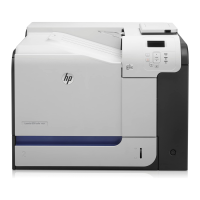FUP Commands
File Utility Program (FUP) Reference Manual—523323-014
2-87
INFO Listing Format
name
is the disk file name of the file whose characteristics are being displayed.
A question mark (?) after the file name might appear for an OSS file entry for which
FUP cannot read the last modification time.
open-state
is the open state of the file. It is displayed as any of:
The states can occur in many combinations. For example:
code
is the file code. Software development has reserved file codes 100 through 999 for
its own use. For a list of the file codes that are currently reserved, see Table 2-2,
System File Code Definitions, on page 2-90.
CODE 0 (zero) is the default code for user-created files. It appears as a blank in
the CODE column of the FUP INFO listing.
OSS designates OSS files.
Example 2-2. INFO Listing Format
CODE EOF LAST MODIF OWNER RWEP TYPE REC BL
[\node.] $volume.subvolume
name open- code eof mod owner sec type rec bl
state
null The file is not open, failed, or broken.
C The file is corrupt. A corrupt file is a file whose contents are in question. DUP
and LOAD mark the destination file as corrupt while these operations are
performed. If the operation does not complete normally, the file is marked
corrupt and should be purged.
O The file is open, or a TMF transaction is active on the file.
? The file is crash-open. That is, it was open when a total system failure occurred
or when the volume where it resides became unavailable.
R The file cannot be opened. Media recovery is needed (undo, redo, or
rollforward).
B The file is open but received an I/O or consistency check failure and needs
media recovery.
OB The file is open but has an I/O or consistency check failure and needs a media
recovery at some point.
?B The file is crash-open and broken.

